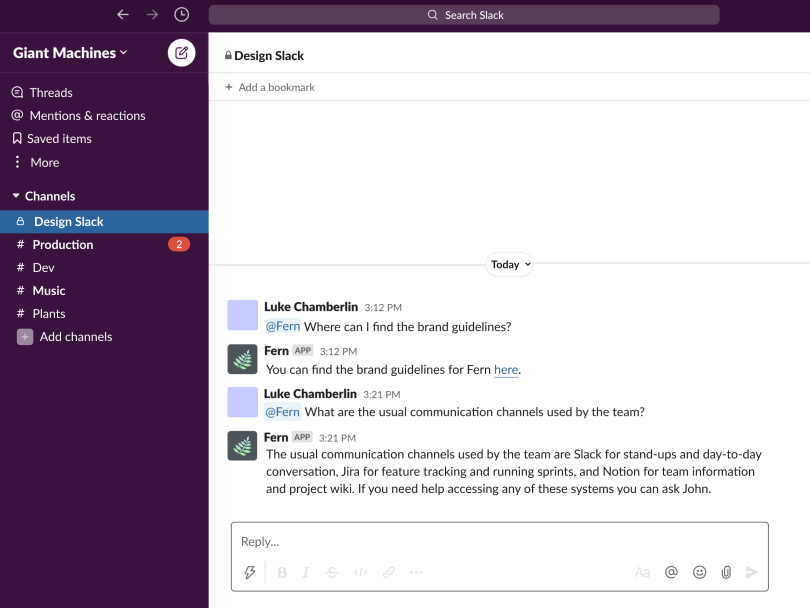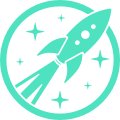Finding time to tinker with new technologies and start a side project isn’t tough to do at Giant Machines thanks to The Studio. The Studio is not an actual space — but rather a space in time.
Giant Machines is a digital product agency that works on a project basis, which provides its teams with downtime between projects. While everyone loves a breather, the company found that spending so much time in a liminal space was taking a toll on its team.
“The bench has ended up as a place filled with uncertainty, ambiguity and directionlessness,” wrote Chief Learning Officer Danny Fenjves in a company blog post.
The Studio is the reinvention of Giant Machines’ process, in which engineers, product managers and designers gather for two-week sprints between projects to work with new tech, develop businesses and create professional development materials. It’s led by Product Director and Studio Head Luke Chamberlin.
It’s thanks to The Studio that Erin Marshall, a software engineer, was able to work with large language models to develop a conversational knowledge management tool that enables her teammates to easily access important project documents.
“This was so fun for me and those who have had the opportunity to work on it,” Marshall said. “It was exciting to use tools that are not just new to us but new in general.”
Giant Machines is a digital product agency whose client roster includes BCG, Bloomberg and ESPN.
Tell us about a project you recently worked on at Giant Machines and what impact it will have on either your team or customers.
We decided to because we had a clear opportunity within our company to work on two things: First, to change the way we think about off-project time. Second, to respond to the immediate needs that we hear from our clients and the market.
I rolled off a healthtech project and had the opportunity to be in The Studio experimenting with a way to securely use private internal data on top of large language models. The idea was to create a tool we’d use ourselves: a knowledge management tool that would help with things like onboarding, offboarding and learning different tech stacks.
What role did you play in developing and launching this knowledge management tool?
I was one of three engineers, along with a designer and a product manager, who spent two weeks seeing how much work we could get done. We gave ourselves a time limit to get real scrappy and keep ourselves honest. I hadn’t really explored artificial intelligence before. We started off with a tool called Postman to make our first API calls, and this served as our initial proof of concept. We then moved on to using a few emerging libraries for LLMs, including Langchain, LlamaIndex and Pinecone to build a tool that interacted with the LLM API.
We were able to build an application that enabled users to access project resources and documents, including GitHub and Notion pages, via a Slackbot. Building it has changed the way we think about off-project time and has moved us into a more comfortable space with these new AI and LLM technologies.

What obstacles did you encounter along the way and how did you successfully overcome them?
A challenge was understanding the practical applications of this technology. Even though the technology is really interesting, the team needed to understand we’re here to build something useful for people. We also had to think through which paths to implementation would provide privacy and accuracy. The technology around LLMs was new to us as engineers, as was this concept of working in The Studio. Everyone was very interested in this opportunity to learn.
What teams did you collaborate with in order to get the knowledge management tool across the finish line?
While we worked with our smaller team in the initial sprint to build the product, we have since seen it grow cross-functionally as different colleagues rotate in and out of The Studio, ensuring everyone can offer a different perspective, strategy or technology application. It’s been very interesting to see. The product is continuing to evolve, and we recently presented it at a company-wide all-hands meeting, which was exciting.
When you think of other companies in your industry, how does Giant Machines compare when it comes to how you build and launch new products?
It's more fun. This is rooted in the culture at Giant Machines, which is characterized by an openness to learning and exploring. This project allowed us the room to experiment, pivot and go in different directions without a client on the other end. We were the clients and still are. It’s been a fun way of learning. We were able to have fascinating conversations and ask technical questions about the implications a tool like this would have in general.





